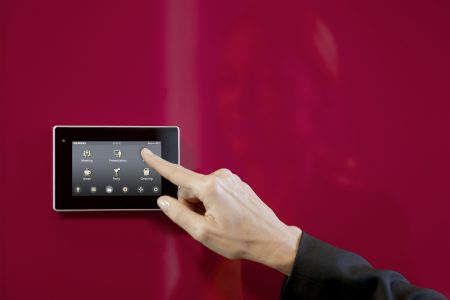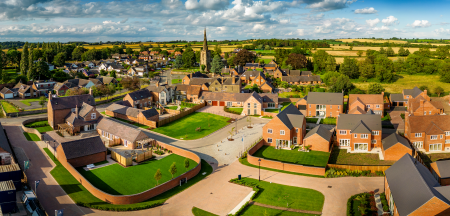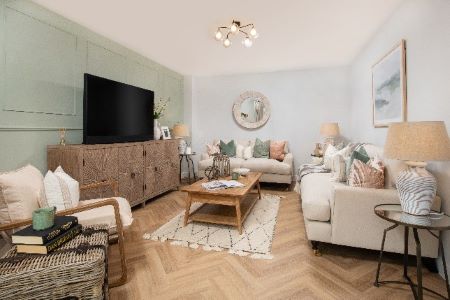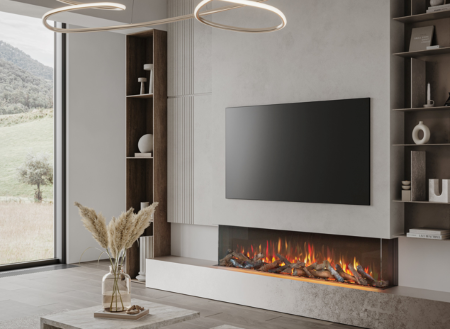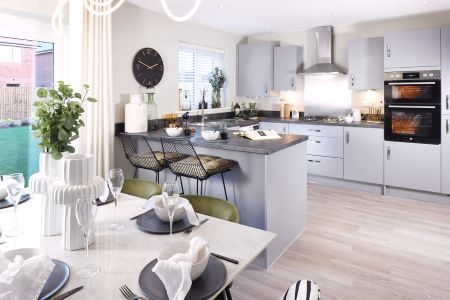Adrian Naef, Head of Global Product Management for Room Automation at Siemens Building Technologies, takes a look at the ongoing trend for building automation
Today, people spend approximately 90% of their days in buildings and enclosed spaces. Both our performance and wellbeing depend to a great extent on the temperature, air quality and brightness in the room. Finding smart ways to control heating, ventilation and air conditioning (HVAC) as well as lighting and shading plays a key role in establishing ideal ambient conditions. Frequently, however, these disciplines are controlled using different systems that operate independently of each other. When manual adjustments need to be made, valuable energy may be lost. Systems that link these disciplines intelligently are an ideal alternative, making it possible to maintain optimum room conditions for room users at any time. In addition, these innovative solutions simultaneously reduce maintenance costs – from building management and energy costs to expenses for upkeep and renovation – over the building’s entire life cycle.
The conditions under which people feel comfortable in a room are quite narrow. To work at our best, the temperature should be between 21 and 24°C. We also need an adequate supply of fresh air since stale air containing high levels of CO2 makes it harder to concentrate and, in extreme cases, can even cause us to make ill-advised decisions. Moreover, the lighting must be right. It should be bright and without glare, especially in offices where people work at computer screens, in order to avoid eye strain.
A poor room climate and inadequate lighting don’t just impair motivation and productivity, they are also harmful to human health. According to figures from the World Health Organization, 20 to 30% of all office workers report complaints such as headaches and burning eyes – symptoms of what is known as sick building syndrome. We ventilate rooms to make them more comfortable, adjust the temperature, open and close blinds, turn lights on and off – and we do this over and over, day in and day out. However, an office with the right temperature, the right air quality and perfect lighting does help us work more productively. Realistically, good conditions can improve productivity by as much as 20%.
HVAC, lighting and shading working together in a room
Yet it is not always easy to create the best room climate for office users. After all, the interplay between heating, ventilation and air conditioning as well as lighting and shading is complex. With conventional automation solutions, these disciplines are controlled separately. Optimizing comfort and energy efficiency, however, requires a system that coordinates all disciplines and controls and monitors them as a whole.
Such a system is Desigo Total Room Automation (TRA) from Siemens. Among other features, this system has an occupancy-dependent constant light control that maintains consistent lighting on the work area throughout the day even when the incident daylight changes. As a result, the light level at workstations can reach the required 500 lux while consuming 40 percent less energy. The louvers of the blinds follow the sun’s position to let glare-free natural light into the room while avoiding direct sunlight. In addition, the shading system is linked to the temperature control to prevent the rooms from overheating. The targeted use of shading can maintain the desired temperature even in unused rooms – often in a cost-neutral way.
Special air volume control functions ensure the right air conditions in the room, keeping the temperature and air quality within the predefined setpoint values. The interplay with central air handling optimizes the supply air temperature and pressure control, resulting in 50% less energy consumption compared to a conventional control system.
Saving energy at the touch of a button
Room automation systems should not take control away from the users. They should be able to override the system to achieve the desired room comfort. At the same time, users must be able to restore optimal energy efficiency easily and even without any technical knowledge. To this end, the room automation system from Siemens uses the Green Leaf indicator: The symbol of a leaf on the room operator unit appears green when the room is operating at optimum energy efficiency. It turns red when energy consumption is less than ideal due to manual intervention.
A practical example will illustrate this unique approach: A meeting is being held in a conference room on a sunny summer day. The blinds are tilted to avoid direct sunlight and hence glare and increased demand for cooling. For the presentation, the room is darkened and the blinds are closed all the way. For the subsequent discussion, however, participants open the blinds manually to let in daylight. Now sunlight is streaming into the room, heating it up. The air conditioning has to generate more cool air to compensate for the rise in temperature. The energy efficiency conditions in the room are no longer ideal, and the Green Leaf indicator turns from green to red to alert room users. All they have to do is tap the leaf symbol to restore optimum energy efficiency.
Actively involving room users in controlling the room climate raises awareness, which in turn has a positive effect not only on their own comfort but also on the environment. Studies conducted by Technische Universität München suggest that energy consumption can be reduced by up to 25% if room users optimize their energy behavior.
For room users to embrace a room automation system, it has to be as easy and intuitive to use as possible. State-of-the-art systems can create a predefined ambiance in a room at the press of a button. A number of different, individually programmable scenarios are available for this purpose. For example, the lights can be dimmed and the blinds lowered for a presentation.
Useful in any building
Room automation stations, which monitor and control individual or multiple rooms, are the heart of the room automation system. Featuring a modular design and flexible programming, they allow the system to be adapted to the building technology actually installed. Compact devices for controlling one or two rooms are new to the market. They come with tested standard applications for controlling radiators, heated and chilled ceilings, air volumes and fan coils. Functions for controlling lighting and shading can be added to the system as needed. Such tested applications reduce effort and costs for planning, installation, operation and maintenance.
The best way to visualize and operate the room automation system is by using a building management platform such as Desigo CC from Siemens. This platform provides central operation and monitoring of all building automation functions, including heating, ventilation, air conditioning, lighting and shading as well as fire safety and security if desired. Operators have a complete overview of all disciplines and can make adjustments centrally or by remote access. They can also respond quickly when problems arise.
Variable building usage requires flexible systems
One factor determining the value of a building is how flexibly it can be used. After all, space and layout requirements change all the time. Tenants move in and out. New business models or changing needs require a different division of space. More emphasis is placed on comfort requirements, requiring modifications to the building systems. If a room automation system is to keep pace with these developments, it must be extremely flexible from the very beginning. If not, each change in usage will be costly.
This requires scalable system concepts which are able to adapt to new realities. With a well conceived segment concept, it is easy to change the room arrangement as necessitated by a reorganization or a new tenant. In Desigo, the floors are divided into room segments, which can be flexibly combined into rooms. Grouping the room segments into rooms does not require any changes to the installations or the programming.
In the construction phase, the basic structure can be limited to a minimal installation, with new functions added at a later point in time. To ensure the system can be expanded as needed and adapted to future changes, thus protecting investments over the building’s entire life cycle, Siemens relies on open, globally recognized communication standards. BACnet enables the room automation stations to communicate with each other and with the building automation platform. Sensors, actuators and room operator units, in turn, communicate with the room automation stations via KNX. Communication standards allow third-party devices to be integrated, while other standards ensure compatibility with future upgrades.
Conclusion
The ongoing growth in demand for energy efficiency, functionality and flexibility is fueling the development of building technology systems. What makes planning and implementation of high-performance systems challenging, however, is the human factor. Because ultimately it is the users with their personal requirements for comfort and well-being who decide to which degree any given solution meets their needs.
Systems that intelligently link building disciplines are an ideal alternative because they allow optimized room conditions to be established at any time, regardless of the room’s occupants.
www.siemens.com

